The Anatomy of a Pandemic
By Alex Jack
”There will be one more new viral epidemic before the Spiral of History peaks in about 20 years,” Michio Kushi predicted in late 2014, “and it will spread worldwide.”
Edward Esko and I had gone into Boston to see him about guidelines for the Ebola crisis that had just broken out and was threatening to spread beyond West Africa. Michio offered sound dietary advice based on his seminar on AIDS and Diet that he gave in the Republic of the Congo for the World Health Organization in the mid-1980s. But he warned Ebola would not be the last major viral outbreak. “World leaders will come to you,” he concluded, observing that a balanced yin yang dietary approach offered the most effective remedy. It may have been his last prediction, as he passed away a few months later.
This spring, as the coronavirus crisis emerged, I was invited to teach at the Kushi Institute of Europe for several weeks. In addition to classes on health care, diagnosis, and 9 Star Ki, I gave a public lecture on the crisis, focusing on the probable origin of the virus as the result of unsustainable agricultural practices (see further below). But as Amsterdam gradually shut down, my talk had to be moved online. After the U.S. government warned Americans abroad to come home immediately or face being stranded, I rescheduled my remaining classes and moved up my return flight.
The day I left in late March, the K.I. classrooms and restaurant were closed down. Natural foods and take-out meals were still allowed to be sold at Deshima, the school’s well-stocked store, conveniently located across from the Rijks-museum. I loved to visit the National Museum and practice my visual diagnosis skills on the Rembrandts, Vermeers, and other masterpieces. But like the nearby Van Gogh Museum, it was one of the first casualties of the epidemic. It barred its doors to visitors before the schools and churches closed, a telling commentary on what the Dutch hold sacred.
The Kuan Yin Temple, one of the most peaceful places in the city, closed down even before I arrived. The Bodhisattva of Compassion had a heavy schedule in the days and months ahead.
Challenge and Response
Overall, the macrobiotic community responded rapidly to the crisis, posting dietary and lifestyle guidelines and holding online webinars. Bill and Marlene W. Tara in London, Denny and Susan Waxman in Philadelphia, Michael Rossoff in Wash-ington, D.C., David and Cynthia Briscoe in northern California, Sheri Demaris in Pennsylvania, and Bettina Zumdick and Edward Esko here in the Berkshires were just some of the many teachers and counselors reaching out.
“There will be one more new viral epidemic before the Spiral of History peaks in about 20 years,” Michio Kushi predicted in late 2014, “and it will spread worldwide.”
Ed, Bettina, and I also prepared a little book on the crisis Covid-19: A Plant-Based Macrobiotic Approach to Prevention and Recovery. However, Amazon wouldn’t accept it. Anything with “Covid” or “Corona” in the title was a third rail in today’s fearful climate, and the ecommerce giant, which monopolizes bookselling in America, complied with a U.S. Government request not to promote dubious coronavirus cures. We considered taking on Amazon the way we did with Monsanto (and triumphed) during the GMO battles in the early 2000s. But in the fog of a global epidemic, a free speech campaign was a distraction, even though we would almost certainly prevail in court. We decided to publish the book under the non-controversial title Strengthening Natural Immunity.
While many teachers and counselors stepped up during the crisis, the response among others left me saddened. They were slow to recognize the scope and severity of the crisis. “It’s no worse than the seasonal flu,” was a common refrain. And then when it became apparent that Covid-19 was much worse, I was often told: “It’s nature’s way of culling the herd,” implying the old, the sick, hamburger lovers, and ice cream addicts were expendable.
It’s true that 86 percent of those who died from Covid-19 had serious preexisting conditions, including heart disease, diabetes, and cancer. But these anti-social views shocked me. Each death was a tragedy for countless spouses, parents, and children. How different this rationale was from Michio and Aveline’s embrace of the ill, no matter how poorly they ate or extreme their lifestyle. The Kushis would always self-reflect when someone didn’t recover or went off the diet: “I’m sorry I was not able to reach them. I will try harder next time.” They never regarded premature death and suffering as inevitable or the result of original sin or bad karma.
How inspiring the selfless response to Covid-19 of countless doctors, nurses, and other medical personnel in risking their own lives to help patients and their families. Donna Clifford, a macrobiotic friend and registered nurse in the Boston area, came down with the virus after several months of exhausting work at her hospital. She said it was the worst medical crisis she had seen in decades of nursing.
Donna is very conscientious in her dietary practice, and that is one reason we selected her to manage this year’s Summer Conference. She is the only healthcare giver in the Commonwealth of Massachusetts that was exempted from having to get a mandatory vaccination against the ordinary flu because of her macrobiotic studies and certification. But even Donna became sick. Now, fortunately she is recovering.
Several of my other colleagues and clients, including other strict macrobiotic practitioners, also came down ill with the virus (and with the help of dietary adjustments and home remedies recovered). To presume that we are invulnerable and don’t need to practice commonsense social distancing or wear masks (if not for our own sake for others) is the kind of supreme arrogance that George Ohsawa thundered against.
Physician Heal Thyself
During the Ebola crisis, one of my students at the K.I. in Becket, a young Brazilian, suggested we travel together to West Africa to treat Ebola patients with macrobiotic foods and remedies. He had recently overcome his own crippling illness with diet and was passionate about helping others. Not wear-ing hazmat suits like other medical personnel, he suggested, would demonstrate to the world that macrobiotics was the solution to the crisis. His spirit very much reminded me of Ohsawa, who once contracted an invariably terminal parasitic disease in French Equatorial Africa at Dr. Schweitzer’s hospital to prove that it could be healed. Ohsawa almost died after the miso, umeboshi, and other specialty foods he and his wife Lima had brought ran out. But fortunately, a care package arrived from Aveline in New York and he survived. Schweitzer was not amused and put the Ohsawas on the next native canoe out of his jungle compound.

Other great healers down the ages have also thrown caution to the winds. Shennong, the legendary first farmer in China, died while experimenting with toxic herbs before he had time to administer the antidote. Sagen Ishizuka, the physician whose book Ohsawa used as a young man to heal tubercu-losis, forsook modern medicine and was ridiculed by his colleagues for prescribing miso soup, brown rice, and daikon for his deathly ill patients in Tokyo. Many of them recovered. Louis Pasteur put his whole career on the line by conducting his first rabies vaccine experiment in a public trial before his scoffing opponents. He succeeded brilliantly. Max Van Pettenkoffer, the German health reformer, drank a vial of
deadly cholera bacteria a few years later to show that Pasteur and Koch’s germ theory of disease didn’t apply to people with

Bats are the main reservoir for coronvavirus and have also been the target of chemical sprays

strong natural immunity. He experienced no ill effects and lived to tell the tale. Schweitzer himself was semi-vegetarian, embraced lepers, and to the horror of the Western medical community allowed relatives of his patients to live and cook with them at his hospital. He won the Nobel Prize for peace for speaking out against nuclear weapons at the height of the Cold War, but not for medicine.
Despite these shining examples, I had no interest in being a macrobiotic hero or martyr and convinced my student it was better to stay out of harm’s way. He returned to Brazil and is now cooking, playing music, and introducing macrobiotics to the poor in and around Sao Paulo. That autumn, Sachi Kato, a chef and teacher at the K.I., and I started www.ebolaanddiet .com, a web site in which we posted dietary and lifestyle guidelines, got endorsements from physicians and offered practical holistic advice during the Ebola crisis.
The Origin of Coronavirus
The coronavirus pandemic not only awakened our better and worse angels. It also gave rise to a multitude of conspir-acy theories. The most persistent, and one promoted by the White House and State Department, is that the virus originated in a Chinese laboratory. It turned out many of the original victims of the outbreak had not visited the animal “wet markets” in Wuhan or come into contact with anyone who did.
Two labs in Wuhan were engaged in research on bat viruses associated with SARS, a deadly, corona-like disease, that broke out in 2003. One of the Chinese labs was engaged in biowar research, and there was collaboration with American researchers. Investigative journalists turned up troubling evidence of “gain-of-function” experiments involving the manipulation of deadly viruses by both superpowers. Because of an international agreement banning biowar research, the tests were classified as “bio-defensive,” or designed to counter new enemy bioweapons, rather than manufacturing new “bio-offensive” plagues. This linguistic sleight of hand not only flouted the treaty, but it also made pathogens more deadly, transmissible, and in some cases newly airborne. Still, as most outside experts and global health agencies agreed, there is no evidence that the virus emerged from the labs. The Trump Administration’s determination to demonize China hearkened back to the search for weapons of mass destruction that served as a pretext for invading Iraq.
As soon as Covid-19 surfaced, I intuitively felt that it arose from monoculture and other modern agricultural practices, so it was irrelevant whether it first surfaced in a market or a lab. Ebola, another mysterious viral disease, emerged in Africa and was also carried by bats. In that case, the bats ate fruit, and the virus was traced to tainted bananas. In the wake of colonialism and industrialization, monoculture and commodity crops have spread worldwide, and in Uganda (site of Marburg, another Ebola like viral disease) banana consumption is the highest in the world.
In South America, Argentine Hemorrhagic Fever, similar to
Ebola, emerged. Medical researchers traced it to pesticides that upset the delicate ecosystem of natural checks and balances in the maize fields. The end result was the emergence of a novel virus transmitted by a small rodent dubbed the maize mouse. In Malaysia, Nipah viral disease broke out about 20 years ago following rapid clearcutting of

“Insect eating bats are more yang, while fruit eating bats are more yin.”

the forests to make way for palm oil plantations. The deforestation drove fruits bats to trees on the edge of a hog farm. The pigs got infected from bat droppings and urine and started the epidemic, which was the basis for the film Contagion. Similar new viral conditions have emerged in many countries ravaged by modern agriculture, deforestation, and urbanization. But for the most part, these outbreaks have remained localized and little known.
In China, the pangolin (a scaly anteater) was originally believed to be the main carrier of the virus, but bats quickly moved to the top of the suspect list. Known as horseshoe bats, the animals come from Yunnan, a province two thousand kilometers southwest of Wuhan, and thrive on insects rather than fruit. Insect eating bats are more yang, while fruit eating bats are more yin. Corona emerged in a temperate zone where the plants, animals, and people are also more yang—small, compact, dry. Ebola emerged in a tropical climate, where the flora and fauna are more yin—large, expanded, moist. Corona thrives in cooler weather, Ebola in warmer. Corona creates blood clots (hardened, yang symptoms), Ebola leads to hemorrhaging (expanded, yin symptoms). They are comple-mentary opposites. Meat, poultry, eggs, dairy, and other animal products are classified as yang and worsen Covid-19. Hence its faster spread in temperate northern countries. Sugar, excessive fruit, too much oil, coffee, alcohol, and other strong yin substances worsen Ebola. Hence its emergence in tropical southern regions.
In the case of Ebola, the most likely scenario is that chemicals sprayed on the soil create havoc in the microbiota, leading to a mutation and giving rise to Ebolavirus. The virus contaminates bananas (and other fruit). The fruit bats eat the bananas and incubate the virus in their digestive systems. They are not carriers and don’t get sick. But as small, compact, warm-blooded mammals with high metabolism from flying they augment or pressure-cook the virus as it passes through them. Then their saliva, urine, and feces fall to earth and infect chimpanzees, gorillas, and other monkeys. The monkeys are a valuable food source of “bushmeat” in war-torn, conflict-mineral-devasted Africa. By the time the people who eat monkey meat get the virus, it has increased in virulence by passing through two mammals. Relatives or medical personnel who then come into contact with their bodily fluids often get infected too, and the contagion spreads like wildfire because now it has passed through three mammals—each one magnifying its effects.
A compounding factor may be the bats’ nocturnal lifestyle. After hunting at night, they sleep during the day in caves, and their body temperature drops precipitously as they enter a state of hibernation. This rapid, constant temperature fluctu-ation reminded me of the transmutation experiments Ed, Woody Johnson, and I had done over the years with Quantum Rabbit, our green energy company. When we rapidly charged the vacuum tube with additional bursts of electrical current, the results were much greater than when we left it at a constant arc. Michio had encouraged us to investigate the rapid heating and cooling of different elements. The bats’ internal thermostat appears to have turbocharged the virus.
In the case of corona, chemicals sprayed on crops in Yunnan—a major hub for rice, soybeans, rapeseed, cotton, and tea—may have given rise to a novel viral strain. In addition to fertilizer, chemical pesticides are used on the crops to prevent insect infestation. In 2019, Yunnan was devastated with an invasion of armyworm, known locally as “heart-devouring worm,” and pesticide use soared. Since insects and spiders are the main food of horseshoe bats, they are at high risk for contamination and probably picked up the toxin from eating tiny creatures exposed to these sprays or that have nibbled contaminated crops.
“Yunnan is undergoing enormous change,” journalist Abrahm Lustgarten reported. “Quaint subsistence farm plots were overtaken by hastily erected apartment towers and high-speed rail lines, as the province endured dizzying development fueled by decades of Chinese economic expansion.” “With every new felled tree, the bats’ habitat shrank, putting the viruses they carried on a collision course with humanity.”
Overall, pesticide use in China skyrocketed from less than 1 million metric tons in 2004 to 3.7 million in 2014. Pesticide use per hectare is about 1.5 to 4 times the world average. Glypho-sate is widely used on corn, rice, soybeans, and other crops in China. The herbicide has been linked to cancer and in the U.S. is the subject of class action lawsuits against Monsanto.
Meanwhile, in Hong Kong, researchers just published a study in Nature suggesting that the coronavirus can be transmitted via bats to the human digestive as well as respiratory system. As with fruit-eating bats in Africa, Chinese insect-eating bats are carriers and do not symptomatize. But they are trapped and eaten in China (hence the wet markets) and are also subjects of medical and military research (hence the labs). Bat droppings may also have been picked up by the pangolin and other mammals, further concentrating the virus. But for the most part, Covid-19 appears to have passed through only one or at most two mammals, rather than three as in Africa. Compared to the ordinary flu, it is about 10 times more deadly, but compared to Ebola, it is 10 times weaker—a logarithmic progression proportional to the number of mammals it has passed through.
In a just published article on bats and the coronavirus, Scientific American reports that “the emergence of new pathogens tends to happen in places where a dense population has been changing the landscape—by building roads and mines, cutting down forests, and intensifying agriculture.”
Out of ignorance and anger, many farmers and communities in China and elsewhere have launched campaigns to eradicate bats because of their link to epidemic disease. But as environmentalists note, this approach is misguided. Bats are one of the world’s main pollinators, they disperse seeds, and eat mosquitoes and other insects, preventing outbreaks of malaria and other deadly scourges. The new viral epidemics are largely caused by our war on nature and a mounting arsenal of deadly chemicals, pharmaceuticals, and other poisons, not from random, chance mutations. The novel viruses are Mother Nature’s way of fighting back—the original biodefense.

Glyphosate Link
A related theory is that respiratory susceptibility to Corona originated with glyphosate, the active ingredient in Roundup, Monsanto’s weed-killer. According to Stephanie Seneff, Ph.D., a researcher at MIT, biofuels made from corn, wheat, and other crops sprayed with Roundup are now used so widely by the transportation sector that aerosolized glyphosate from exhaust fumes are everywhere. Not only cars, trucks, and buses, but also planes and ships now use a mixture of conventional fuels and biodiesel. Recall how coronavirus initially spread among passengers on airplanes and cruise ships exposed to such emissions.
In China, she points out, the Yangtze River runs through Wuhan and is highly polluted with industrial wastes as well as pesticide runoff containing glyphosate. Other hot spots for Covid-19 include New York and New Orleans that both border polluted rivers (the Hudson and Mississippi) and have large biodiesel fleets of buses and rapid transport systems. Much of Europe’s biodiesel originates from GMO Roundup Ready soybeans grown in Argentina. E-cigarettes also include aerosolized biodiesel additives, she reports, and the recent epidemic of a new vaping disease that affects the respiratory system of users presents many of the same symptoms as Corona.
“I strongly suspect that the degree to which a person is susceptible to Covid-19 is proportional to the degree to which they have been exposed to glyphosate,” Seneff concludes. Her words would seem to apply to bats and other wildlife as well as people. “Eating a certified organic diet and staying away from major highways may be among the best tools for protection from an acute reaction to Covid-19.”
The Electrical & Wireless Connection
Another theory of Covid-19’s origin is that it is linked to the rollout of 5G wireless networks in Wuhan, Seattle, and other initial hubs of contagion. A little research shows that 5G did appear shortly before the pandemic, but it was also introduced in dozens of other Chinese cities beside Wuhan, and no outbreaks occurred. Still, 5G (and 4G, 3G, and other earlier incarnations) may be a significant factor.
In his new book The Invisible Rainbow, the first compre-hensive investigation of the health effects of electricity from the introduction of the telegraph to today’s smartphones, computers, and satellites, medical researcher Albert Firsten-berg makes a compelling case that the influenza pandemic of 1917-18 was linked to the introduction of radar during World War I that lowered natural immunity. Medical sleuths have long puzzled why the misnamed Spanish flu first appeared among U.S. soldiers in Kansas and among French and German soldiers on the Western Front (among whom one half to three-quarters were among the first to get ill).
Firstenberg, who first awakened to holistic health through Sugar Blues, the macrobiotic classic by Bill Dufty, observes a plant-based diet himself. But he contends that background electricity has had a bigger impact on the rise of heart disease, cancer, diabetes, and other chronic ills than poor diet. His medical charts correlating the rise of these disorders with the introduction of radio, telephone, TV, and other common elec-trical appliances are eye-opening. However, I feel electric cooking (which the macrobiotic community has long recog-nized as an existential threat to health) may be an underlying factor in this rise. But its impact is not discussed in the book. In a recent article “Is the Sky Falling?” Firstenberg links susceptibility to Covid-19 with EMFs and indirectly with 5G.
“Yes, there is a respiratory virus associated with influenza,” Firstenberg concludes. “No, the virus does not cause the disease. Influenza is a neurological disease that can affect almost every organ, with or without respiratory symptoms. It is caused by electricity.”
A further tie-in with bats is that satellites, cell phones, and other electronics affect their ability to fly and hunt through echolocation. Climate change is also a contributing factor. It has shifted the bats’ geographic range and hibernation cycle. Warmer temperatures can also alter the frequency and pitch of their ability to echolocate.
In these challenging times, it is important to stay balanced and centered. The fear and anxiety generated by the crisis are often worse than the virus itself. Parents, teachers, workers, and children have come up with many original and creative responses to the crisis and everyday life. This fount of resilience and community solidarity augers well for the future, and I like to think the crisis is a dress rehearsal for unified planetary action to reduce global warming and climate change.
But at this perilous time, virtually no government, hospital, or parent-teachers’ association has issued basic, commonsense guidelines on strengthening natural immunity through diet and lifestyle. To prevent the next pandemic, organic plant-based dietary, agriculture, and environmental changes will need to be implemented. The creative energy released by Corona could lead further on the path to planetary health and sustainability, but only if we self-reflect and make nature of our friend, not our enemy.

Concluding Unscientific Parable
In Europe, I planned to visit Anne Teresa de Keersmacher, a dancer and friend, in Brussels. I had seen her earlier in the year when she choreographed the new revival of West Side Story on Broadway. But because of the pandemic, it was not possible for me to travel to Belgium. On the phone, she told me that she had recently come upon an injured crow and nursed it back to health by feeding it healthful food and dancing with it on her shoulder. Anne Teresa then explained that the scientific name for the crow family is corvid, and this particular species is corona.
Many people consider crows, like coronavirus, an evil omen. But by tending it gently, as she did, natural crises such as Covid-19 may ultimately prove to be our friend and awaken us to greater health and well-being. ¨

Alex Jack is president of Planetary Health and editor of Amberwaves.

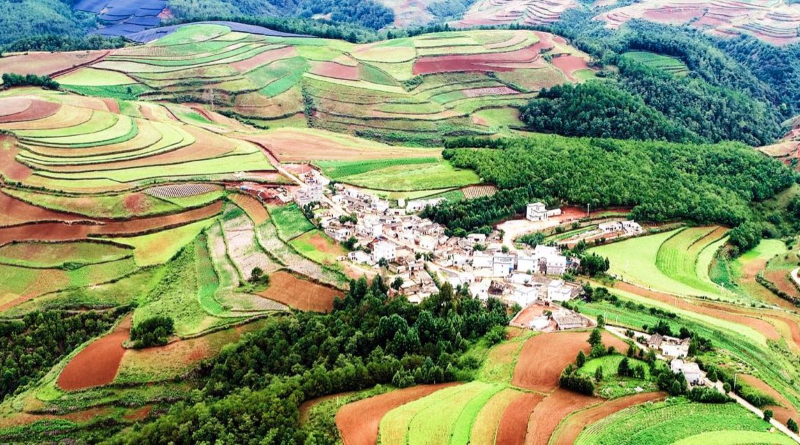
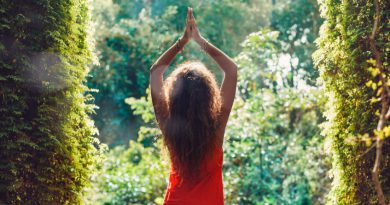
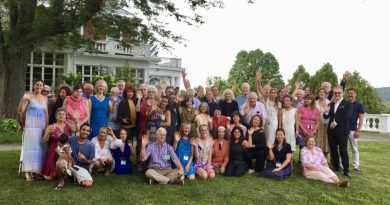
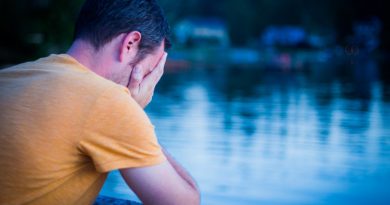
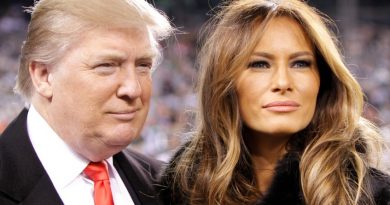
Brilliant articles. I have just gone through all of them now and more people should read your articulate and compulsive writing. It is backed up as always Alex by proper research.
Let’s get these words translated At least into mandarin and French.
Maybe the delacoute’s and Lawrence And Gaetan Girard. I have asked around looking for students at s couple of universities in U.K. to find people who will translate these well balanced words as an education for the public. I haven’t found translators yet.
Tell me what else I can do apart from speaking to friends and family and I will do it. From what I discovered the younger ones are more open of course. But one has to keep trying. Can’t win them all but a seed here and there can be surprisingly effective eventually.
Many are on the point of seeing the light of change we are travelling towards.
Thankyou
Do I need to join Amberwaves to be of more help?
I did a fair amount on California starting off with Charles but now I’m stuck with U.K. I must do what I can there.
Chris ((ruperts son) (very macro from birth ) is in Amsterdam on his second masters at the conservatory and was sorry to miss Deshima people but will read your article avidly
Your timely advice to me helped my consciousness not to slide too far away.
A reminder that we can get more sick by weakened organs through allowing emotions to interfere
My main problem is I can’t get gas cooking but am coping and undergoing more healing thank God nevertheless
Good job Alex
Michio will be pleased.
How do I get a website ? Which is an easy one ?
Patricia x